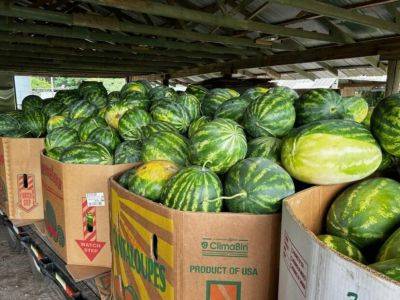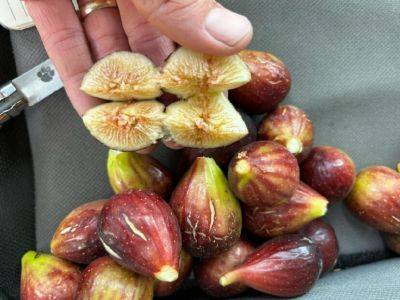Zack Snipes
SC Fruit and Vegetable Field Report – May 31, 2022
24.07.2023 - 12:02 / hgic.clemson.edu
Zack Snipes reports, “It seems like everything is coming in from the fields right now. We got some rain but could really use some more. I am seeing lots of aphids on a variety of crops (melons, cukes, eggplant). I am also seeing ladybird beetles and parasitized aphids in these fields, which means our predators are out there working for us. Bacterial wilt and Southern blight are starting to appear on tomatoes as well. Knowing the difference and preparing for next season’s crop is critical. It is getting hot and is still windy, so growers might consider adding one or more irrigation cycles to their fields. Remember that in our sandy soils, any irrigation event over an hour is just wasting water. More frequent 30-45 minute cycles are more efficient.”
Justin Ballew reports, “We got around an inch of rain in most places last week, but it’s already dry again. We’re going to see a lot of irrigation running this week. Overall, diamondback moth (DBM) populations seem to be climbing, though we are harvesting some nice-looking brassicas right now. Remember that we can perform field bioassays to help determine which insecticides may work best on your farm. DBM populations change quickly, so even if we’ve done one before in previous seasons, it will likely be helpful to run another. Cucurbits are growing and picking well. Remember that cucurbit downy mildew was found in the state on cucumbers last week.”
Sarah Scott reports, “We got a little rain here and there last week, which has helped with moisture. The peach crop is looking better as we move along into the season. Yield and flavor are both good right now. Some of the earlier varieties are still showing signs of damage from the freeze events in March, which resulted in cracked

SC Fruit and Vegetable Field Report- May 17, 2021
Zack Snipes reports, “Everything is progressing nicely in the Lowcountry. We got some much-needed rain last week. Temperatures have been cool, so things are somewhat slow from a developmental standpoint. All the crops look great, especially the tomato crop. We have a really nice fruit set and very little disease. I am expecting to see bacterial spot to show up sometime soon and have been getting a few calls about bacterial wilt taking down plants. I’ve also gotten a few calls about blossom end rot. That is typical on the first fruit set and will usually correct itself provided there is ample calcium in the soil AND the soil moisture is consistent. In our sandy soils, the main cause of blossom end rot is allowing the soil to dry out during the fruiting stage. Folks might want to consider multiple 30 minute to 1-hour irrigation cycles on tomatoes per day.”
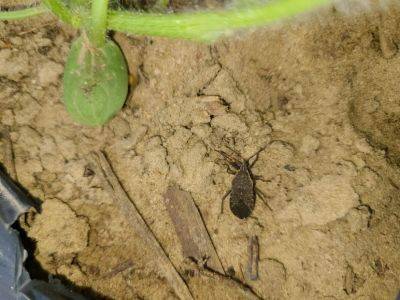
SC Fruit and Vegetable Field Report – May, 3, 2021
Rob Last reports, “Botrytis (gray mold) is evident in places following rainfall. Sanitation and removal of the infected berries are critical to reducing inoculum loading. Fungicide applications will also be required to prevent spore germination and further spread of the disease. Where spider mite treatments have been applied, they have effectively reduced the populations but will still require scouting and monitoring. The yields achieved are very good. Cucurbit crops continue to develop well with a low incidence of chill injury from the cooler temperatures observed on April 21/22. Crops are running well, with some flowering being observed. Cucumber beetles are being monitored, and a few aphids are present in places. Cucumber beetles observed are currently below the threshold of 5 beetles per plant. Squash bugs are also being found on some sites. Careful monitoring will be required because numbers can increase rapidly. Crops are free from disease; however, protectant fungicides are still a critical input. Blueberries are swelling well and beginning to blush. Blackberries are flowering with excellent fruit set and bud formation. Spider mites have been evident in these crops, too; however, miticide applications are proving very effective.
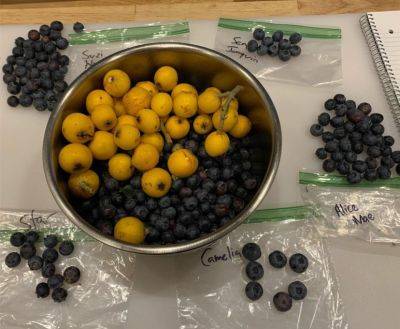
SC Fruit and Vegetable Field Report May 10, 2021
Rob Last reports, “Following some hail events last week, we find some shredded leaves in cucurbits and some small fruit crops. Strawberries continue to develop well, with isolated incidences of gray mold being seen. Sanitation is one of the critical methods for managing gray mold along with fungicide applications. Thrips are also beginning to be observed. Blueberries in the area are being harvested with good quality fruit. Keep a close eye on scouting for insects. Spider mites are still active in many crops. Cucumber beetles continue to increase as they are migrating from overwintering sites. Many populations are at or very close to the threshold of five adult beetles per plant.”

SC Fruit and Vegetable Field Report January 18, 2022
Rob Last reports, “In our area, crops are developing well with few pest or disease issues currently. Some brassicas are displaying a reddening to the older leaves associated with reduced phosphorous uptake. Phosphorous uptake can be reduced in cold temperatures but will recover when we see some warmer temperatures. There is no response to an additional application. Where strawberries are flowering or have fruit, it is advisable to remove those to minimize sources of Botrytis gray mold for later in the year.”
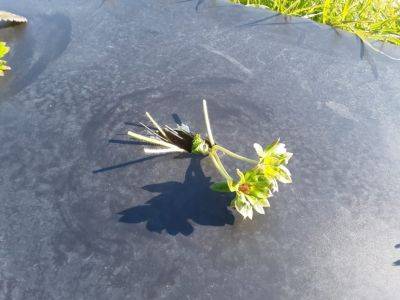
SC Fruit and Vegetable Field Report – January 31, 2022
Rob Last reports, “Pest and disease issues in the area remain very low; however, as temperatures rise, we expect activity to increase. Although it is quiet, it is still essential to continue to scout. Assessment of crops indicates that we have escaped the worst of any chill injury or loss of plants. Pruning of fruit crops continues while dormancy holds and labor begins to return to the area.”
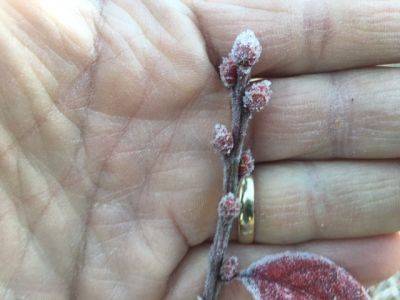
SC Fruit and Vegetable Field Report February 14, 2022
Rob Last reports, “Strawberries in the area look good, with some new leaf development emerging from the crown. Boron applications are being applied, either as a foliar application or through the drip system. Remember, we are looking to apply 1/8 lb. of boron per acre. Over application of boron can be phytotoxic and detrimental to the plants. Plans are also being made to begin fertigation applications later this month to aim for the first pick in early April. The initial target is to apply 5.25 lbs. N per acre. After the first application, a tissue test should be taken to refine fertility recommendations further. Please also remember we have the drip fertigation calculator to make the calculations more straightforward. Brassica transplants are going in the ground this week and are looking good. The pruning of peaches and perennial fruit is pretty much complete, and we await the arrival of spring.”
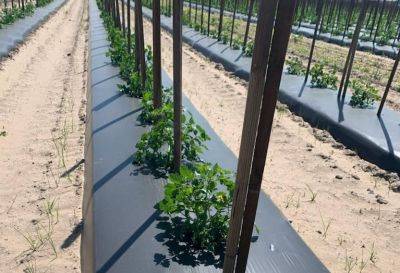
SC Fruit and Vegetable Field Report – April 18, 2022
Zack Snipes reports, “It has been a very windy spring. The winds are drying out our soils and beating up plants. I have looked at some tomatoes, and the ones that aren’t tied are wind-whipped, and the ones that are tied have callus tissue forming where the string is touching them. We have some beautiful lettuce and greens coming in right now, along with spring onions. I have also seen some squash coming in on farms that grew squash in high tunnels. Strawberry plants are still small and have very few blooms for this time of year. We are harvesting highbush blueberries in high volumes right now. I think we escaped more cold damage than previously expected.”
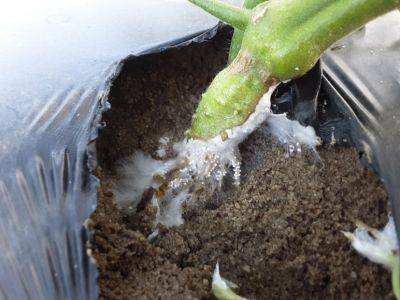
SC Fruit and Vegetable Field Report – June 6, 2022
Rob Last reports, “Insect and disease activity is increasing in the area, across a broad range of crops. In cucurbits, we are seeing powdery mildew and gummy stem blight in watermelon. Remember to keep spray intervals tight. Loopers are also being found in the area, and applications to manage rind worms will be beneficial as we rapidly approach harvest. Fusarium wilt of watermelons is showing up in many fields. At this stage, there is no effective treatment; however, soil temperatures are likely to reduce the incidence of new infections. Tomatoes and peppers are developing well with Southern blight and bacterial wilt in evidence. Spider mites are very active right now. Blackberries are just coming to harvest with good flavor and quality. Remember to scout your crops regularly to ensure timely applications can be made.”

SC Fruit and Vegetable Field Report – May 23, 2022
Rob Last reports, “As we see temperatures increase, strawberry flowering is reducing. Plants are still heavy with fruit, so managing diseases such as anthracnose and botrytis through fungicides and sanitation are key. Pests and diseases in cucurbits are currently low. With watermelon and cantaloupes, a gap in fungicide protection of 7 days can lead to disease. Given the increased chances of rainfall, we are increasing protection against gummy stem blight. Cucurbit downy mildew is active in South Georgia, so any cucumber growers should be prepared to apply fungicides. Some additional rainfall in the area would be most welcome.”
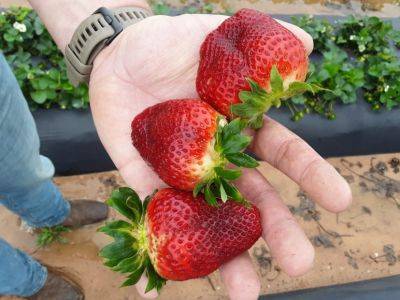
SC Fruit and Vegetable Field Report March 28, 2022
Rob Last reports, “The first of this season’s strawberries are coming to market with good quality. Growers still need to be very mindful of spider mites. Populations are around in the area but are variable. As we get into harvest season, gray mold management will be critical, so sanitation and appropriate fungicide applications will be needed. Otherwise, preparations for watermelon planting and some early cantaloupes have been sown. Damage assessments on later variety peaches will continue.”
